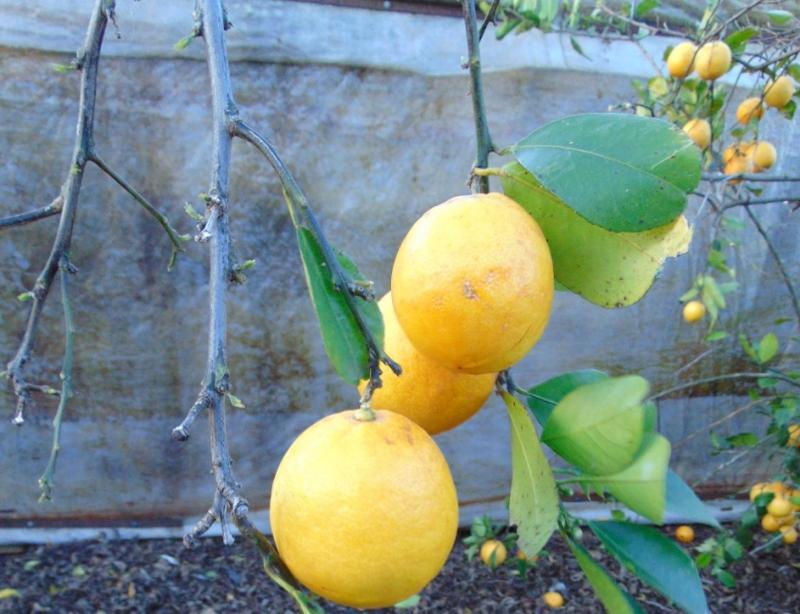It is autumn and time to put the gardens to bed. Sometimes after the gardens are cleared and mulched, and even plowed under, there will be a plant that simply refuses to die and comes back the next year.
In the 1950s, the USDA Research Center Rio Farms imported a sweet lemon to the United States. The USDA center closed, and the citrus plants there were left unattended. A deep freeze came through in 1983, killing most of them, but one lemon tree survived, and John Panzarella, a Master Gardener, collected budwood and propagated it.
The Ujukitsu (Citrus ujukitsu) is unlike other lemons because it is a sweet lemon plant, sometimes called the “lemonade fruit” because of its sweet flavor. Ujukitsu sweet lemon trees grow in a graceful weeping habit with long, arching branches that bear pear-shaped lemons at the ends.
The ripe lemons are bright yellow with thick skin. Ujukitsu is believed to be a strain of tangelo, which is a cross between a grapefruit and a tangerine. You can ask local nurseries to order the Ujukitsu lemon tree, or get it from specialty growers such as Logee’s Greenhouse, www.logees.com.
Ujukitsu lemons grow slower than other citrus but set fruit early. The plants will flower when they’re just two or three feet tall. Even if you aren't trying to grow Ujukitsu lemon trees for fruit, the fragrant blossoms alone make them worth the effort. They flower abundantly in the spring followed by fruit, the biggest of which is about the size of a softball. The lemons ripen through the fall and into the winter.
Because lemon trees prefer acid conditions, use peat moss in the potting mix to keep the pH down. Use about one-third potting soil, one-third perlite or vermiculite, and one-third peat or other organic matter in your potting soil. Fertilize with citrus fertilizer at half the recommended strength.
Put your lemon tree outside during the summer for the extra sunlight. Let the tree acclimate to the outdoors by setting it in the shade of a tree or on the north side of the house for the first few days. Give it full, direct sunlight once it gets used to being outside.
At the end of summer, prepare your lemon tree for the lower light and drier temperatures indoors by putting the plant in light shade for a week or 10 days before bringing it indoors. Lemons grow best indoors at 65 degrees during the day, and 5 to 10 degrees cooler at night. Keep the leaves clean and shiny by occasionally wiping them with a damp rag.
You can easily get more plants by rooting semi-hardwood stem cuttings. Stems that are still soft and bendable will not root as well as older, semi-hard stems. It’s best to take cuttings in spring or early summer when the trees are actively growing.
Root the cuttings in fresh potting mix, keeping them slightly moist. Repot when new roots reach a length of one inch or so. Seeds also grow quite easily, though they will usually not grow plants exactly like the parent. Even though citrus plants grown from seeds rarely get big enough to bloom and set fruit, this can be a fun children's project.
Plant a sweet lemonade Ujukitsu lemon tree, and you will have a true hardy immigrant that survived cold and neglect to thrive in America.




















































